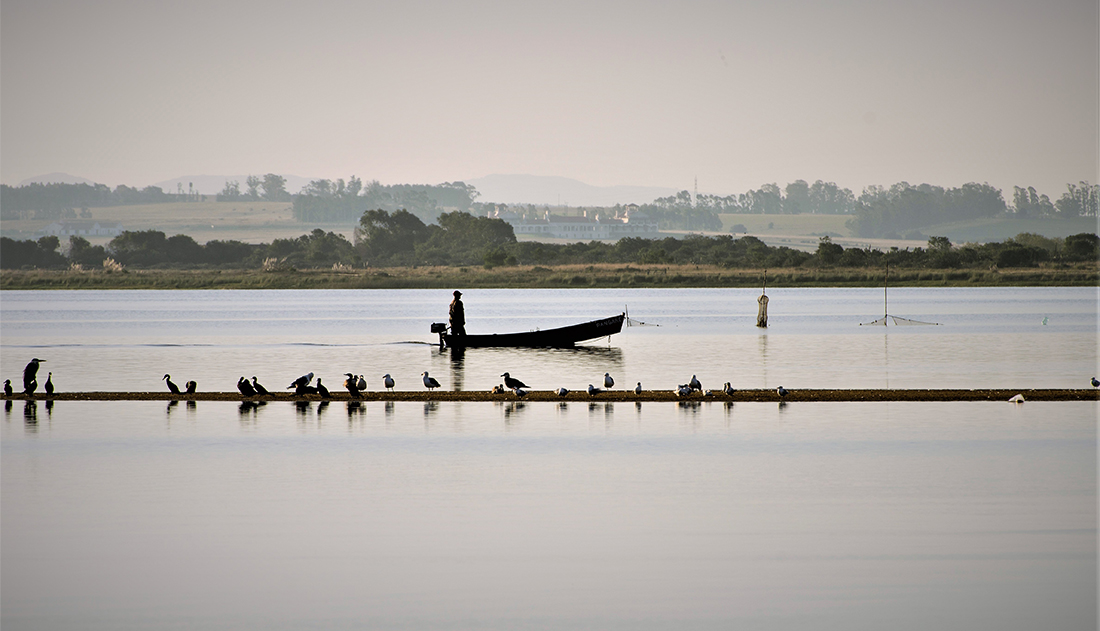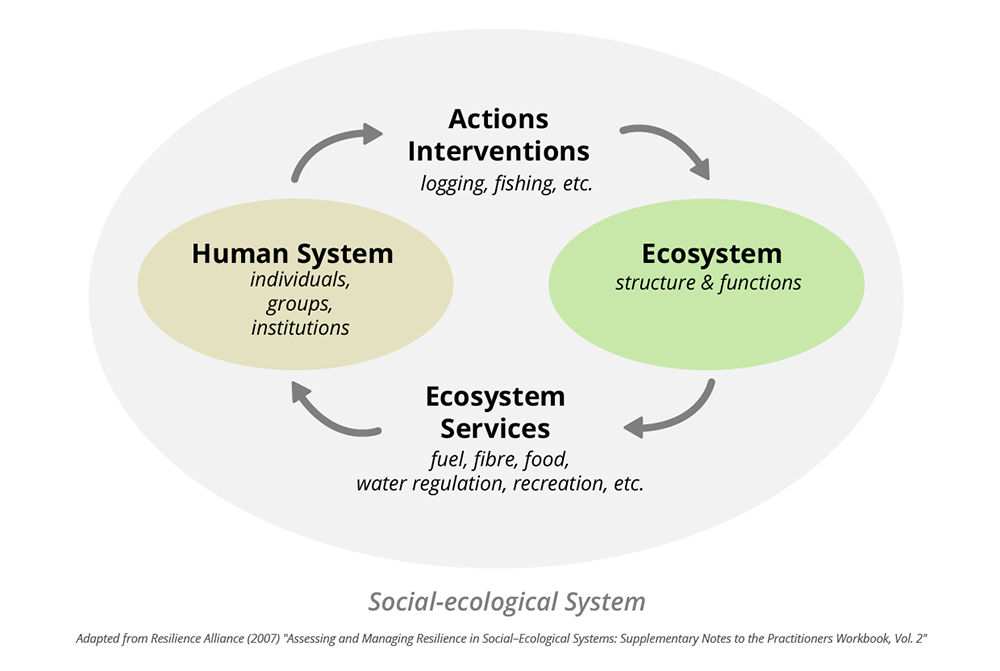Social-ecological systems
These are complex adaptive systems, in which human societies are embedded in nature. The social component refers to all human activities that include economy, technology, politics and culture. On the other hand, the ecological component refers to the biosphere, that is, to the part of the planet on which life develops. Both parts are interrelated, the limits of the system are arbitrary and depend on the question, hypothesis or perspective of analysis.

Photo by Hugo Inda
The old vision that considered the natural world and the social world as separate can be considered overcome. It was replaced by a new paradigm that emphasizes that human societies, economies and cultures are constitutive parts of the biosphere which transform it both locally and globally. At the same time, people, economies, societies and cultures depend on the biosphere which shapes them, therefore they both co-evolve. Socio-ecological systems emerge from this interaction in which its components interact and are conditioned in a dynamic and constant way.
A central aspect of these interactions involves ecosystem services, that is, the benefits that society obtains from ecosystems, which constitutes the basis of their development and sustainability. Ecosystem services include provision, regulation, cultural or spiritual services that depend upon the basic services which represent the sustenance of life and without which the previously mentioned would be impossible.

Socio-ecological systems present great organizational complexity both spatially and temporally. Its dynamics present non-linear changes and abrupt transitions, that is, changes in their structure and functioning. Such changes can occur unpredictably and may affect the provision of ecosystem services that are the basis of economic and productive activity. Systems management, therefore, faces us with the unavoidable challenge of the sustainability of ecosystem services.
Communities, economies and cultures are embedded in the biosphere and transform it locally and globally. It is for this reason that we speak of the Anthropocene, an era in which humans are a determining factor changing the structure and functioning of ecosystems on a planetary level. The speed, scale and interconnectivity of these changes is unprecedented, and implies a potential risk. This, in time, situates sustainable development against unprecedented challenges that require a revision of the paradigms that are in place until now.
The challenge is to move away from the vision of the environment as something separate from the social sphere – an externality, and to value the biosphere as a precondition of social justice, economic development and sustainability. In this sense, the socio-ecological systems paradigm allows an approach to the understanding of complexity and the adaptive management of systems in order to ensure the sustainability of life on the planet.

Key references →
Berkes F., and Folke, C., eds. (1998). Linking Social and Ecological Systems: Management Practices and Social Mechanisms for Building Resilience. Cambridge: Cambridge Univ. Press.
Folke, C., Biggs, R., Norström, A. V., Reyers, B., Rockström, J. (2016). Social-ecological resilience and biosphere-based sustainability science. Ecology and Society, 21(3), 41.
Reyers, B., Folke, C., Moore, M., Biggs, R., Galaz, V. (2018). Social-Ecological Systems Insights for Navigating the Dynamics of the Anthropocene. Annual Reviews of Environment and Resources, 43, 267-289. https://doi.org/10.1146/annurev-environ-110615-085349
Additional suggested reading
Carpenter, S., y Folke, C. (2006). Ecology for transformation. Trends in Ecology and Evolution, 21(6), 309-315.
Ekins, P., Simon, S., Deutsch, L., Folke, C., De Groot, R. (2003). A framework for the practical application of the concepts of critical natural capital and strong sustainability. Ecological Economics, 44, 165-185.
Chapin III, F. S., Matson, P., Mooney, H. (2002). Principles of Terrestrial Ecosystem Ecology., New York: Springer Verlag.
Liu, J., Dietz, T., Carpenter, S., Folke, C., Alberti, M., Redman, Ch., Schneider, S., Ostrom, E., Pell, A., Lubchenco, J., Taylor, W., Ouyang, Z., Deadman, P., Kratz, T., Provencher, W. (2007). Coupled Human and Natural Systems. Ambio, 36(8), 639-649.
Millenium Ecosystem Assesment (2005). Living Beyond Our Means. Natural Assets and Human Well Being. Washington D.C.: Millenium Ecosystem Assesment.
Rockström, J., Steffen, W., Noone, K., Persson, Å., Chapin, III, F. S., Lambin, E., Lenton, T. M., Scheffer, M., Folke, C., Schellnhuber, H., Nykvist, B., De Wit, C. A., Hughes, T., Van der Leeuw, S., Rodhe, H., Sörlin, S., Snyder, P. K., Costanza, R., Svedin, U., Falkenmark, M., Karlberg, L., Corell, R. W., Fabry, V. J., Hansen, J., Walker, B., Liverman, D., Richardson, K., Crutzen, P., Foley, J. (2009). Planetary boundaries: exploring the safe operating space for humanity. Ecology and Society, 14(2), 32.
Steffen, M. (2010). Barreras que limitan la conservación de servicios ecosistémicos: análisis del caso de Laguna del Sauce. (tesis de maestría). Montevideo: Programa de Maestría de Ciencias Ambientales, Facultad de Ciencias, Universidad de la República.
Related with »
Ecosystem Services
